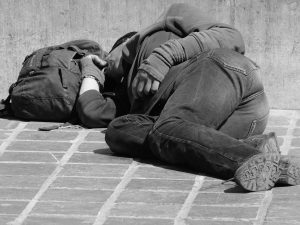Pseudoscience. We have all heard the term bandied about – especially from such noted luminaries as James Randi and the Committee for Skeptical Inquiry (CSICOP). What does it mean? Is paranormal investigation considered a pseudoscience?
According to that great bastion of information called Wikipedia, pseudoscience is defined as “any body of knowledge, methodology, belief, or practice that claims to be scientific or is made to appear scientific, but does not adhere to the basic requirements of the scientific method.”
Ahhh…”scientific method.” Another term which keeps rearing its head. If you have read some of my previous writings, then you are wholly familiar with scientific method and its application to paranormal research. Again, from our friends at Wikipedia: “Scientific method is a body of techniques for investigating phenomena, acquiring new knowledge, or correcting and integrating previous knowledge. It is based on gathering observable, empirical and measurable evidence subject to specific principles of reasoning. The scientific method consists of the collection of data through observation and experimentation, and the formulation and testing of hypotheses.”
So, we now have a basic understanding of what pseudoscience is – as well as how the principles of scientific method are considered an integral component. Let’s examine a completely fictitious, but very realistic example of pseudoscience within the framework of paranormal research. Group “X” promotes itself as a team of legitimate scientific researchers. It even says so on their website – and everything you read on the web is true, right? On this evening, the illustrious team is conducting a paranormal investigation at an allegedly “haunted” location. The team is determined and settles in for the long night ahead. One of the team members is the group psychic – a kindly, middle-aged lady who has participated in several prior vigils. Two hours into the investigation the psychic begins receiving “visions” of a young child who was supposedly murdered in the location. She elaborates and the team focuses its attention on her descriptive narrative. The psychic’s revelations are diligently logged as evidence of paranormal activity. Soon enough, dawn breaks and the investigation concludes. With the exception of several dust orbs caught on camera, no hard data or evidence is collected.
Remember that the scientific method is based upon gathering observable, empirical and measurable evidence subject to specific principles of reasoning. The utilization of the psychic as the team’s primary investigative tool, even if it were completely accurate, does not fit within the constraints of observable, empirical, or measurable evidence. Since the psychic’s impressions cannot be observed by a third party, nor can these impressions be measured, they do not fall within the parameters of the scientific method and are, thus, not considered scientifically valid data. If Group “X” chooses to utilize the psychic’s impressions as evidence of the paranormal, then Group “X” has now practiced pseudoscience.
As we explored previously, paranormal research (or “ghost hunting”) is currently the fad hobby. Throughout the country, groups have literally sprung up overnight due to the popularity of such television shows as “Ghost Hunters,” “Dead Famous,” and “Celebrity Paranormal Project.” These newly minted groups often attempt to emulate their TV counterparts – minus any corresponding knowledge, training, or organizational structure.
Without a firm understanding of scientific methodology, these groups have unintentionally transitioned from well-intentioned “scientific” researchers into fringe areas of pseudoscience. Recall the definition of pseudoscience and the correlation becomes clear.
Research under the guise of science – without following established scientific principles – is not truly science. Therefore, by definition, it is pseudoscience.
Utilization of subjective means, including psychics, ouija boards, séances, and divination, cannot be observed or measured. Consequently, these areas of paranormal study fall into the pseudoscience category.
So, where does that leave us – the dedicated paranormal investigators? Is paranormal investigation pseudoscience? Collectively, are we wasting our time searching for answers outside of legitimate scientific means?
The answer to this question lies in the outlined goals within each group. As we are all aware, not every group has the same beliefs, goals, and perspectives on paranormal research. Some individuals may want nothing more than validation of their own individual beliefs, for their own personal reasons. They are not out to “prove to the world” that ghosts exist. If it is some internal conflict that drives their need to seek out answers in whatever format that provides them peace, who are we to criticize?
However, if a group truly wishes with sincere intent to follow a “scientific” framework for purposes of uncovering undeniable “evidence” of the paranormal, then a critical, honest review of their procedures is in order as the only “evidence” which will be accepted by the world-at-large must come from within a rigid scientific context. This is how “proof” operates. Evidence gathered using any other approach will be discarded as pseudoscientific. With a growing number of examples that could be pointed out (we’ll mention no names), groups which propagate pseudoscience, especially those which are visible to the public via self-aggrandizing media promotion, actually serve to further separate us from the mainstream, traditional scientific community.


